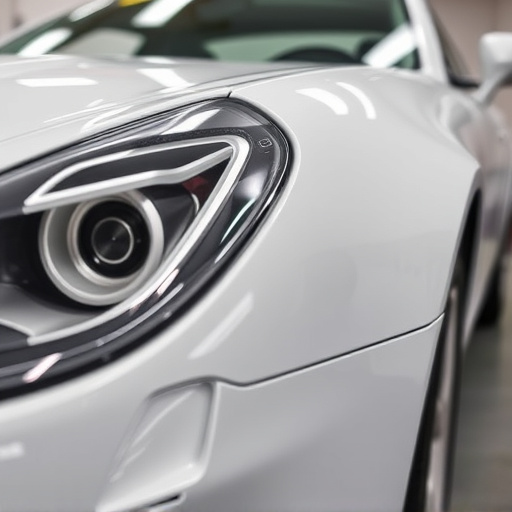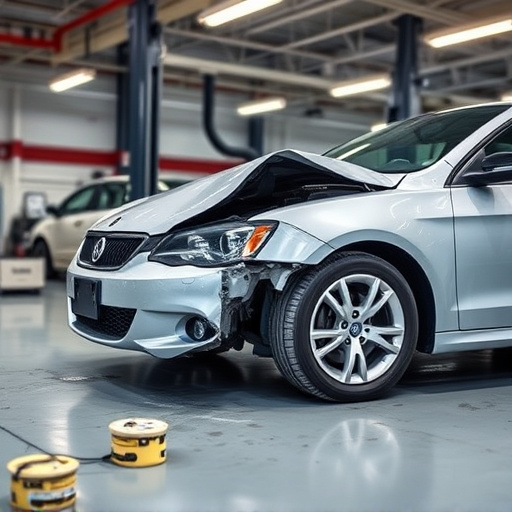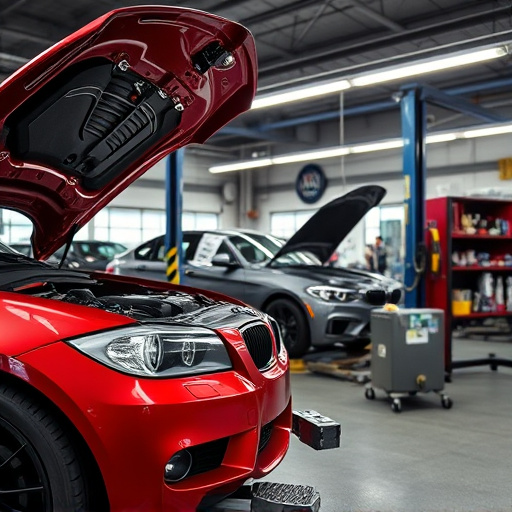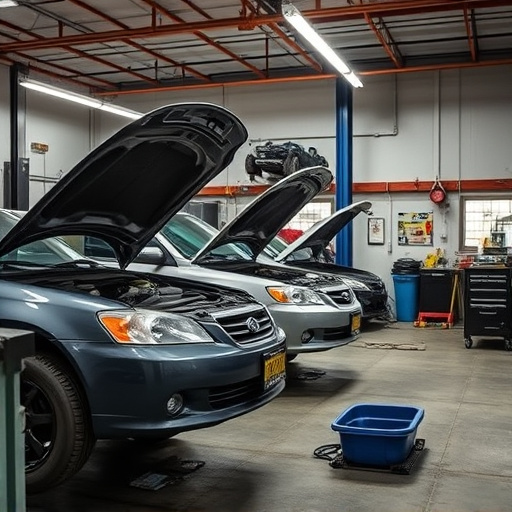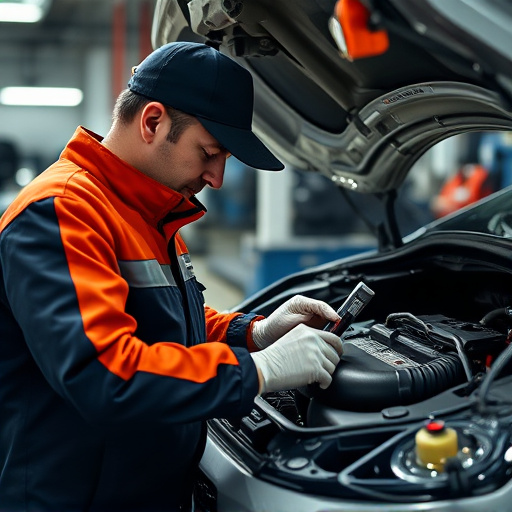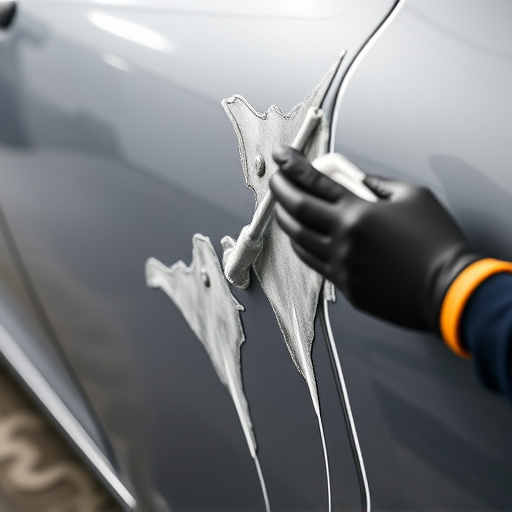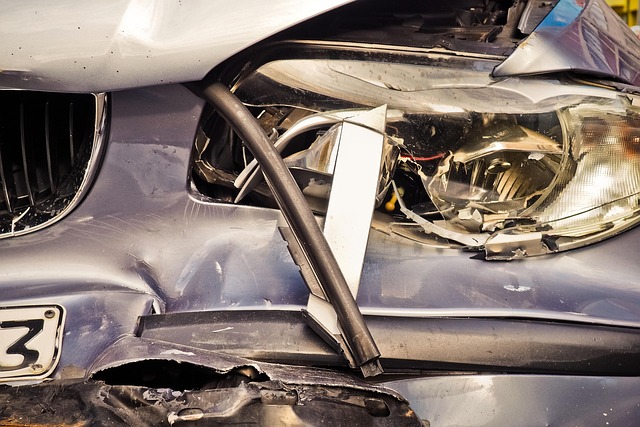Airbag module replacement is a precise process demanding expertise to ensure vehicle safety. It involves frame straightening, meticulous removal and installation of new modules, wiring, testing, and bumper repair. Calibration is crucial post-replacement for correct airbag deployment. Regular inspections by auto professionals promote safety and facilitate timely car damage repairs.
Airbag modules are crucial safety features in modern vehicles, designed to protect occupants during collisions. However, these advanced systems can fail due to various factors, leading to compromised safety. This article explores how timely airbag module replacement restores proper safety functions. We delve into the failure modes of airbags, the step-by-step process of replacement, and critical post-replacement checks to ensure safe vehicle operation. Understanding these aspects is essential for both professionals and car owners alike.
- Understanding Airbag Module Failure Modes
- The Step-by-Step Process of Replacement
- Ensuring Safe Operation After Airbag Module Replacement
Understanding Airbag Module Failure Modes

Airbag modules are critical safety features in modern vehicles, designed to protect occupants during a collision. However, they can fail in various ways due to manufacturing defects, wear and tear, or previous accidents. Understanding these failure modes is essential for effective airbag module replacement, ensuring that the vehicle’s safety functions are restored. Common issues include sensor malfunction, deployment mechanism failures, and even structural damage that renders the entire module unusable.
Proper diagnosis is key before undergoing an airbag module replacement. Mechanics inspect sensors, wiring, and the inflator mechanism to identify the problem. In cases of severe damage or aging components, auto glass replacement or fleet repair services might be required to source compatible parts for a seamless automotive restoration. A well-executed replacement process involves installing a new module that meets manufacturer standards, ensuring it functions correctly and restores the vehicle’s safety capabilities.
The Step-by-Step Process of Replacement
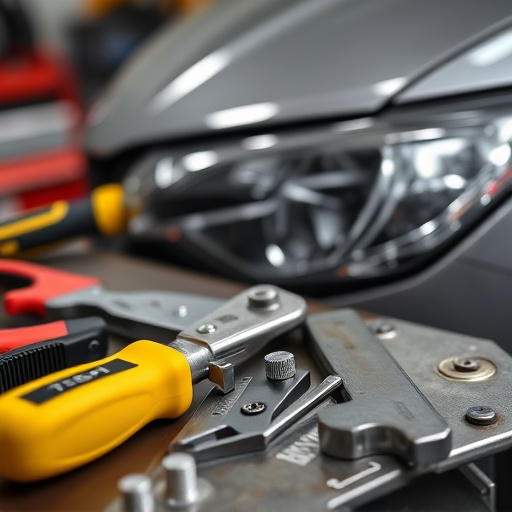
The process of replacing an airbag module is a delicate operation that requires precision and expertise. It typically involves several steps to ensure the safety and effectiveness of the new component. First, the vehicle’s frame straightening is assessed; this step is crucial as any misalignment could impact the airbag’s deployment mechanism. After ensuring the car damage repair is minimal, the technician begins by removing the old airbag module, carefully detaching all connected wiring and sensors. This meticulous process requires a deep understanding of the vehicle’s electrical system to avoid any short circuits or malfunctions.
Once the old module is extracted, a new, compatible airbag module is installed. The replacement part must be precisely aligned and securely fastened according to the manufacturer’s specifications. Following this, all wiring connections are reattached, and thorough testing is conducted to verify the integrity of the system. This includes checks on power supply, sensor readings, and most importantly, the airbag’s ability to deploy correctly in case of an accident. The final step involves inspecting the bumper repair, ensuring it aligns with the vehicle’s aesthetics and structural integrity.
Ensuring Safe Operation After Airbag Module Replacement

After an airbag module replacement, ensuring the safe operation of these critical safety systems is paramount. Proper installation and calibration are essential to guarantee that airbags deploy correctly and effectively during a collision. Uncalibrated or improperly installed airbags may fail to deploy when needed or, worse, deploy incorrectly, causing further harm to occupants. Skilled technicians use specialized equipment to verify the system’s functionality and ensure it meets manufacturer specifications, providing peace of mind for drivers and passengers alike.
Auto maintenance professionals emphasize the importance of timely airbag module replacement and subsequent system checks. Even with collision damage repair, where airbags may have been compromised, regular auto maintenance includes airbag diagnostic scans to identify any issues. Regularly scheduled inspections not only help maintain optimal safety features but also facilitate prompt car damage repair if an airbag malfunction is detected.
Airbag module replacement is a critical process that ensures vehicles maintain their essential safety functions. By understanding failure modes, following a meticulous replacement procedure, and verifying safe operation afterward, drivers can rest assured that their vehicles are equipped with reliable airbags, ready to protect them in the event of an accident. This comprehensive approach to airbag module restoration is vital for maintaining peak vehicle safety standards.
